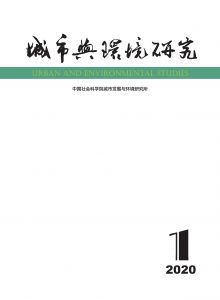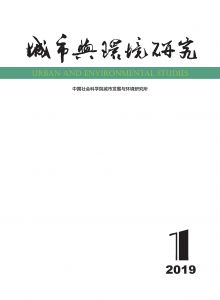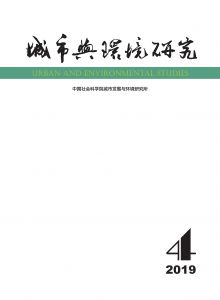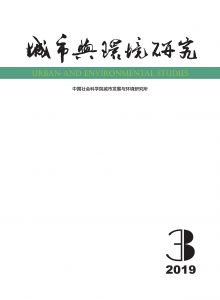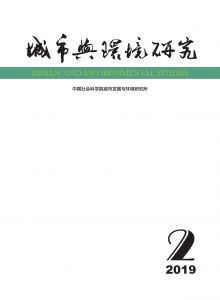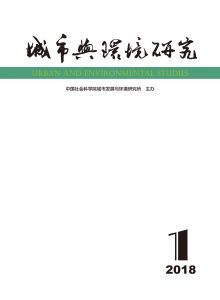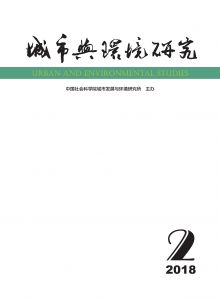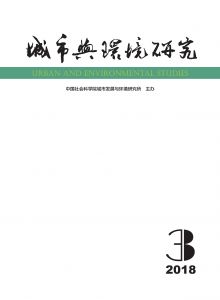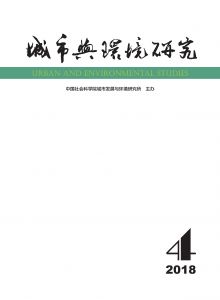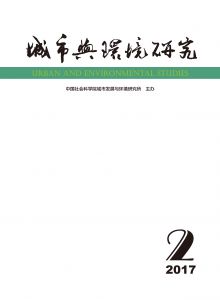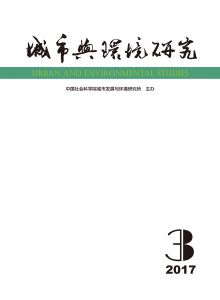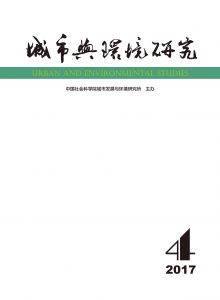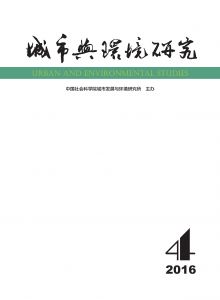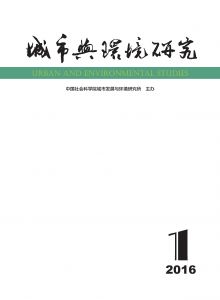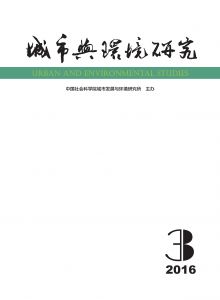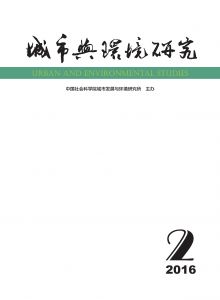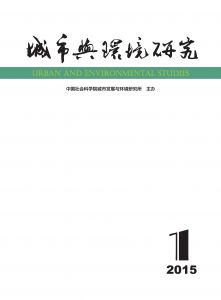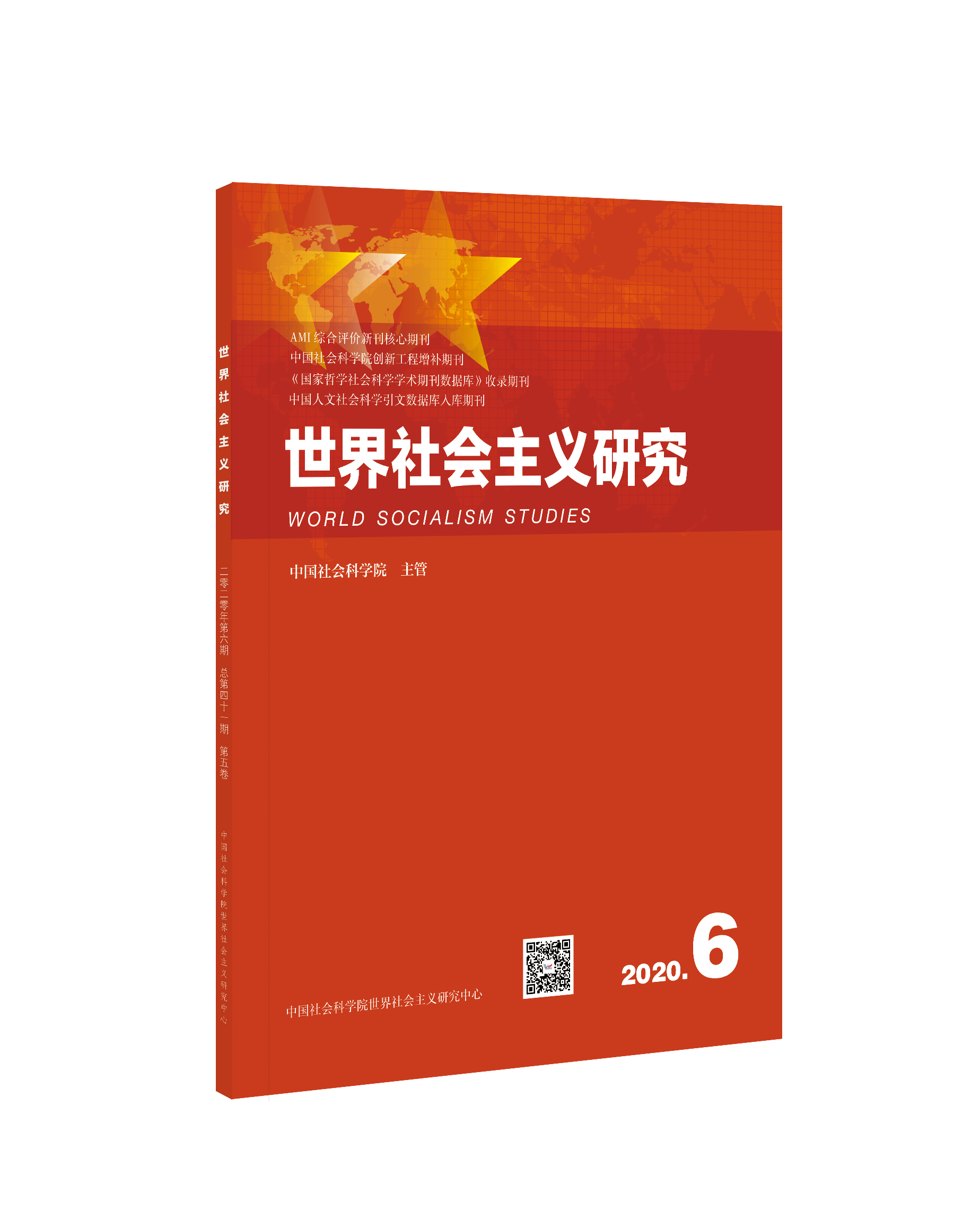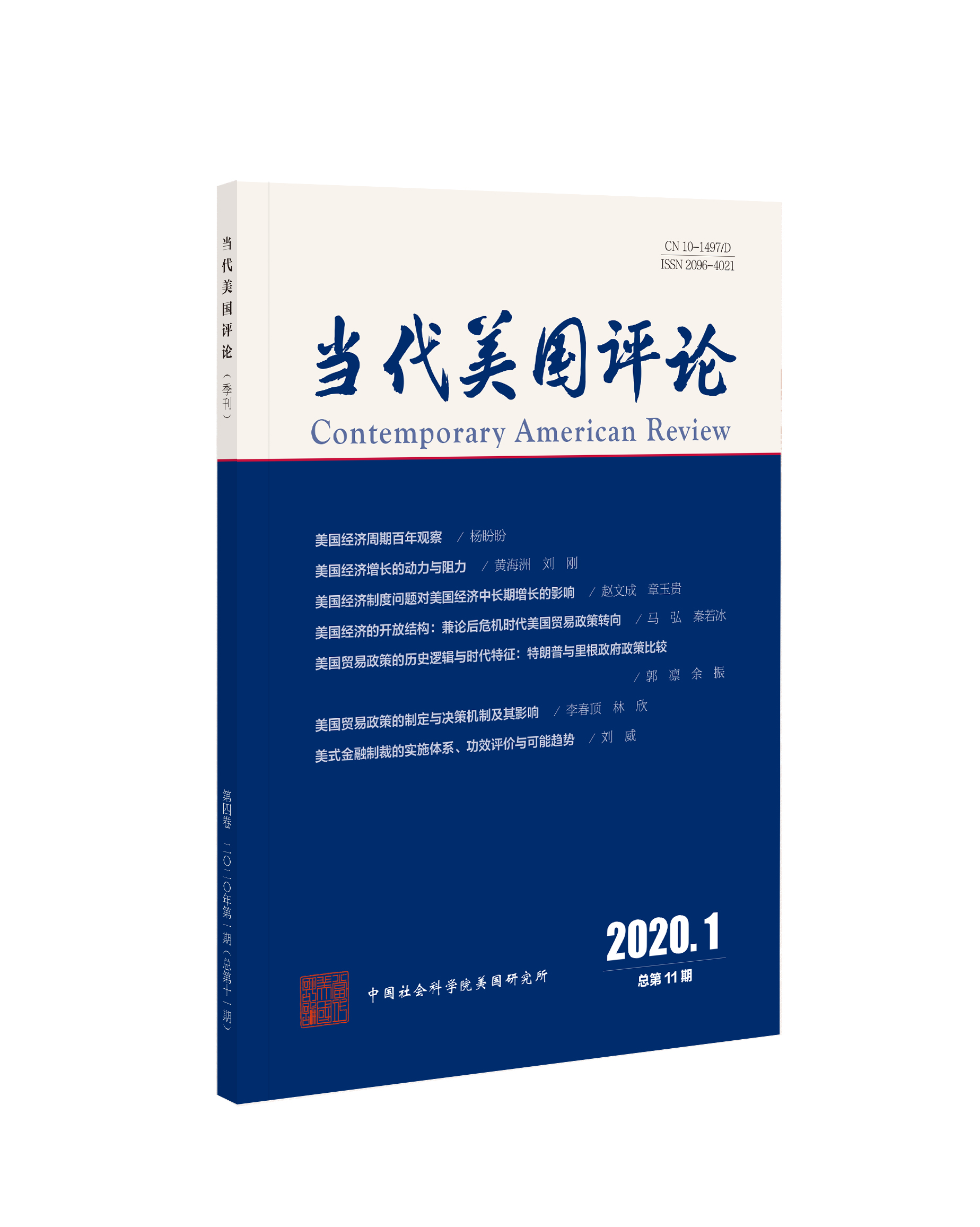最新期刊
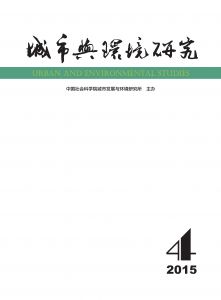
目录
过往期刊
参考文献
-
编委会
-
·学术论文·
-
地价、房价和城市空间结构
-
气候变化评估模型中贴现率的敏感性分析及其伦理意义
-
空间功能分工有助于缩小地区差距吗?
-
建筑温室气体排放核算方法研究
-
中国乡村半城市化地区的识别
-
“十三五”时期中国的环境保护形势与政策方向
-
城乡收入差距会影响二氧化碳排放吗?
-
-
·学术访谈·
-
在新常态下崛起的长江中游城市群
-
-
·会议综述·
-
引领智慧城市话语权,打造未来城市新形态
-
-
2015年总目录
-
投稿须知
-
版权页
按年份浏览:
- 全部
- 2020
- 2019
- 2018
- 2017
- 2016
- 2015
- 2014
[1][1]丁成日(2006):《中国房价持续“走高”的原因分析》,《城市发展研究》第6期,第1~10页。
[2][2]丁成日(2007):《城市经济与城市政策》,北京:商务印书馆,第26~29页。
[3][3]朗咸平(2007):《博鳌房地产论坛演讲》,焦点房地产网。
[4][4]刘民权、孙波(2009):《商业地价形成机制、房地产泡沫及其治理》,《金融研究》第10期,第22~37页。
[5][5]陆昀(2009):《京沪深三地楼市泡沫越吹越大房价涨幅超GDP5倍》,《中华工商时报》,http://house.people.com.cn/GB/10569576.html.
[6][6]钟庭军(2009):《论住房的刚性需求》,《经济理论与经济管理》第9期,第16~21页。
[7][7]Bertaud,A. and J.Brueckner (2005),“Analyzing Building-height Restrictions:Predicted Impacts and Welfare Costs”,Regional Science and Urban Economics ,35,pp.109-125.
[8][8]Brueckner,J.K.(1987),The Structure of Urban Equilibria:A Unified Treatment of the Muth-Mills Model ,in E.S.Mills(Ed.)Handbook of Regional and Urban Economics,Vol.II,Boston,MA:Elsevier Science,pp.821-845.
[9][9]Ding,C.(2004),“Urban Spatial Development in the Land Policy Reform Era:Evidence from Beijing”,Urban Studies ,41(10),pp.1889-1907.
[10][10]Ding,C. and X.Zhao (2014),“Land Market,Land Development and Urban Spatial Structure in Beijing”,Land Use Policy ,40,pp.83-90.
[11][11]Dowall,D.E.(1992),“A Second Look at the Bangkok Land and Housing Market”,Urban Studies ,29(25),pp.25-37.
[12][12]Dowall,D.E. and P.A.Treffeisen(1991),“Spatial Transformation in Cities of the Developing World:Multinucleation and Land-capital Substitution in Bogota,Colombia”,Regional Science and Urban Economics ,21(2),pp.201-224.
[13][13]Erol,I. and A.Güzel(2006),“The Elasticity of Capital-land Substitution in the Housing Construction Sector of a Rapidly Urbanized City:Evidence from Turkey”,Review of Urban & Regional Development Studies ,18(2),pp.85-101.
[14][14]Fare,R. and B.J.Yoon(1985),“On Capital-land Substitution in Urban Housing Production”,Journal of Urban Economics ,17,pp.119-124.
[15][15]Kau,J.B. and C.F.Lee(1976),“Capital-land Substitution and Urban Land Use”,Journal of Regional Science ,16(1),pp.83-92.
[16][16]Kau,J.B. and C.F.Sirmans(1981),“The Demand for Urban Residential Land”,Journal of Regional Science ,21(4),pp.519-528.
[17][17]McDonald,J.F.(1981),“Capital-land Substitution in Urban Housing:A Survey of Empirical Estimates”,Journal of Urban Economics ,9,pp.190-211.
[18][18]Muth,R.F.(1964),“The Derived Demand Curve for a Productive Factor and the Industry Supply Curve”,Oxford Economic Papers ,16(2),pp.221-234.
[19][19]顾高翔(2014):《全球经济互动与产业进化条件下的气候变化经济学集成评估模型及减排战略——CINCIA的研发与应用》,北京:中国科学院大学博士论文,第183~223页。
[20][20]黄蕊(2014):《EMRICES+研发及其对中国协同减排政策的模拟》,上海:华东师范大学博士论文,第165~166页。
[21][21]刘昌新(2013):《新型集成评估模型的构建与全球减排合作方案研究》,北京:中国科学院大学博士论文,第99页。
[22][22]刘昌义(2012):《气候变化经济学中贴现率问题的最新研究进展》,《经济学动态》第3期,第123~129页。
[23][23]王铮、刘筱、刘昌新等(2014):《气候变化伦理的若干问题探讨》,《中国科学:地球科学》第7期,第1600~1608页。
[24][24]王铮、张帅、吴静(2012):《一个新的RICE簇模型及其对全球减排方案的分析》,《科学通报》第26期,第2507~2515页。
[25][25]张帅(2012):《IAM的RICE簇气候保护政策模拟系统设计与实现》,北京:中国科学院研究生院硕士论文,第44~67页。
[26][26]朱潜挺(2012):《含碳交易环节的气候保护集成评估模型研究》,北京:中国科学院研究生院博士论文,第100页。
[27][27]Ackerman,F. and I.Finlayson(2006),“The Economics of Inaction on Climate Change:A Sensitivity Analysis”,Climate Policy ,6(5),pp.509-526.
[28][28]Beckerman,W. and C.Hepburn(2007),“Ethics of the Discount Rate in the Stern Review on the Economics of Climate Change”,World Economics ,8(1),pp.187-210.
[29][29]Bruin,K.C.,R.B.Dellink,and R.S.J.Tol(2009),“AD-DICE:An Implementation of Adaptation in the DICE Model”,Climatic Change ,95,pp.63-81.
[30][30]Byatt,I.,I.Castles,and I.M.Goklany,et al.(2006),“The Stern Review:A Dual Critique:Part II:Economic Aspects”,World Economics ,7(4),pp.199-232.
[31][31]Carter,R.M.,C.R.Freitas,and I.M.Goklany et al.(2006),“The Stern Review:A Dual Critique:Part I:The Science”,World Economics ,7(4),pp.165-198.
[32][32]Dasgupta,P.(2008),“Discounting Climate Change”,Journal of Risk and Uncertainty ,37(2),pp.141-169.
[33][33]Gollier,C.(2006),“An Evaluation of Stern’s Report on the Economics of Climate Change”,IDEI Working Paper ,p.464.
[34][34]Intergovernmental Panel on Climate Change(2007),The 4th Assessment Report. http://www.ipcc.ch
[35][35]Mendelsohn,R.O.(2006),“A Critique of the Stern Report”,Regulation (Winter 2006-2007),pp.42-46.
[36][36]Nordhaus,W.D.(1992),“An Optimal Transition Path for Controlling Greenhouse Gases”,Science ,258(5086),pp.1315-1319.
[37][37]Nordhaus,W.D.(2007),“A Review of the Stern Review on the Economics of Climate Change”,Journal of Economic Literature ,45(3),pp.686-702.
[38][38]Nordhaus,W.D.(2014),“The Ethics of Efficient Markets and Commons Tragedies:A Review of John Broome’s Climate Matters:Ethics in A Warming World”,Journal of Economic Literature ,52(4),pp.1135-1141.
[39][39]Nordhaus,W.D. and Z.L.Yang(1996),“Regional Dynamic General-Equilibrium Model of Alternative Climate-Change Strategies”,The American Economic Review ,86(4),pp.741-765.
[40][40]Popp,D.(2004),“ENTICE:Endogenous Technological Change in the DICE Model of Global Warming”,Journal of Environmental Economics and Management ,48(1),pp.742-768.
[41][41]Rawls,J.(1971),A Theory of Justice . Cambridge:Belknap Press,pp.109-112.
[42][42]Stern,N.(2007),The Economics of Climate Change—The Stern Review ,Cambridge:Cambridge University Press.
[43][43]Tol,R.S.J. and G.W. Yohe (2006),“A Review of the Stern Review”,World Economics ,7(4),pp.233-250.
[44][44]Toth,F.L.(1995),“Discounting in Integrated Assessments of Climate Change”,Energy Policy ,23(4-5),pp.403-409.
[45][45]Weitzman,M.L.(1998),“Why the Far Distant Future Should Be Discounted at Its Lowest Possible Rate”,Journal of Environmental Economics and Management ,36(3),pp.201-208.
[46][46]Yang,Z.L. and P.Sirianni(2010),“Balancing Contemporary Fairness and Historical Justice:A Quasi-Equitable Proposal for GHG Mitigations”,Energy Economics ,32(5),pp.1121-1130.
[47][47]Yang,Z. and S.Menon(2013),“Tacking Negatively Correlated Global and Local Externalities:An Economic Study of Multiple Gases Issue in Climate Change”,Climate Change Economics ,4(3),pp.1-21.
[48][48]陈国亮、陈建军(2012):《产业关联、空间地理与二三产业共同集聚——来自中国212个城市的经验考察》,《管理世界》第4期,第82~100页。
[49][49]陈建军、陈菁菁(2011):《生产性服务业与制造业的协同定位研究——以浙江省69个城市和地区为例》,《中国工业经济》第6期,第141~150页。
[50][50]陈秀山、徐瑛(2008):《中国制造业空间结构变动及其对区域分工的影响》,《经济研究》第10期,第104~116页。
[51][51]范剑勇(2004):《长三角一体化、地区专业化与制造业空间转移》,《管理世界》第11期,第77~84页,96页。
[52][52]范剑勇(2008):《产业结构失衡、空间集聚与中国地区差距变化》,《上海经济研究》第2期,第3~13页。
[53][53]范剑勇(2013):《产业集聚与区域经济协调发展》,北京:人民出版社,第1~18页。
[54][54]范剑勇、李方文(2011):《中国制造业空间集聚的影响:一个综述》,《南方经济》第6期,第53~66页。
[55][55]范剑勇、邵挺(2011):《房价水平、差异化产品区位分布与城市体系》,《经济研究》第2期,第87~99页。
[56][56]范剑勇、谢强强(2010):《地区间产业分布的本地市场效应及其对区域协调发展的启示》,《经济研究》第4期,第107~119页。
[57][57]范剑勇、张雁(2009):《经济地理与地区间工资差异》,《经济研究》第8期,第73~84页。
[58][58]范剑勇、朱国林(2002):《中国地区差距演变及其结构分解》,《管理世界》第7期,第37~44页。
[59][59]高波、陈键、邹琳华(2012):《区域房价差异、劳动力流动与产业升级》,《经济研究》第1期,第66~79页。
[60][60]江静、刘志彪(2006):《商务成本:长三角产业分布新格局的决定因素考察》,《上海经济研究》第11期,第87~96页。
[61][61]柯善咨、赵曜(2014):《产业结构、城市规模与中国城市生产率》,《经济研究》第4期,第76~88页。
[62][62]刘秉镰、武鹏、刘玉海(2010):《交通基础设施与中国全要素生产率增长——基于省域数据的空间面板计量分析》,《中国工业经济》第3期,第54~64页。
[63][63]陆铭、向宽虎(2012):《地理与服务业——内需是否会使城市体系分散化?》,《经济学(季刊)》第3期,第1079~1096页。
[64][64]魏后凯(2013):《构建面向城市群的新型产业分工格局》,《区域经济评论》第2期,第41~43页。
[65][65](美)伍德里奇(2007):《计量经济学导论》,北京:中国人民大学出版社,第193页。
[66][66]张若雪(2009):《从产品分工走向功能分工:经济圈分工形式演变与长期增长》,《南方经济》第9期,第37~48页。
[67][67]张学良(2014):《2013中国区域经济发展报告》,北京:人民出版社,第105~107页。
[68][68]赵勇、白永秀(2012):《中国城市群功能分工测度与分析》,《中国工业经济》第11期,第18~30页。
[69][69]周黎安(2008):《转型中的地方政府:官员激励与治理》,上海:格致出版社,上海人民出版社,第1~5页。
[70][70]Amiti,M.(2005),“Location of Vertically Linked Industries:Agglomeration versus Comparative Advantage”,European Economic Review ,49(4),pp.809-832.
[71][71]Chen,B.Z. and Y.Feng (2000),“Determinants of Economic Growth in China:Private Enterprise,Education and Openness”,China Economic Review ,11(1),pp.1-15.
[72][72]Combes,P.P.,T.Mayer,and J.F.Thisse (2008),Economic Geography:The Integration of Regions and Nations . Princeton University Press,p.170.
[73][73]Duranton G. and D.Puga(2005),“From Sectoral to Functional Urban Specialization”,Journal of Urban Economics ,57(2),pp.343-370.
[74][74]Duranton G. and D.Puga (2014),The Growth of Cities . In Aghion and Durlauf(eds) Handbook of Economic Growth,Vol.2,New York:North-Holland,pp.781-853.
[75][75]Ellison,G.,E.L.Glaeser and W.R.Kerr(2010),“What Causes Industry Agglomeration?Evidence from Coagglomeration Patterns”,American Economic Review ,100(3),pp.1195-1213.
[76][76]Fleisher,B.,H.Z.Li,and M.Q.Zhao(2010),“Human Capital,Economic Growth,and Regional Inequality in China”,Journal of Development Economics ,92(2),pp.215-231.
[77][77]Fujita,M.,P.Krugman,and A.J.Venables(1999),The Spatial Economy:Cities,Regions,and International Trade . Cambridge:Cambridge University Press,pp.1-5.
[78][78]Fujita,M. and J.F.Thisse(2002),Economics of Agglomeration:Cities,Industrial Locations,and Regional Growth . Cambridge:Cambridge University Press,pp.169-216.
[79][79]Glaeser,E.L. and J.M.Shapiro(2003),“Urban Growth in the 1990s:Is City Living Back?”,Journal of Regional Science ,43,pp.139-165.
[80][80]Head,K. and T.Mayer(2004),The Empirics of Agglomeration and Trade ,Handbook of Regional and Urban Economics,4,pp.2609-2669.
[81][81]Head,K. and T.Mayer(2006),“Regional Wage and Employment Responses to Market Potential in the EU”,Regional Science and Urban Economics ,36(5),pp.573-594.
[82][82]Helpman,E.(1998),The Size of Regions ,in D.Pines,E.Sadka and I.Zilcha(eds.),Topics in Public Economics.London:Cambridge University Press,pp.1-24.
[83][83]Jensen,J.B.,L.G.Kletzer,and J.Bernstein,et al. (2005),Tradable Services:Understanding the Scope and Impact of Service Offshoring ,Brookings Trade Forum,Brookings Institution Press,pp.75-233.
[84][84]Krugman,P.R.(1991),Geography and Trade . Massachusetts:MIT Press,pp.1-5.
[85][85]北京市发展和改革委员会(2014):《北京市企业(单位)二氧化碳排放核算和报告指南(2014版)》。
[86][86]陈洪波、王新春、储诚山(2015):《欧盟近零能耗和近零碳建筑进展及对我国的启示》,《中国建材》第1期,第108~111页。
[87][87]国家发展和改革委员会(2011):《省级温室气体清单编制指南(试行)》。
[88][88]黄志甲、赵玲玲、张婷等(2011):《住宅建筑生命周期CO2 排放的核算方法》,《土木建筑与环境工程》第12期,第103~105页。
[89][89]林波荣、刘念雄、彭渤等(2013):《国际建筑生命周期能耗和CO2 排放比较研究》,《建筑科学》第8期,第22~27页。
[90][90]林波荣、彭渤(2010):《我国典型城市全生命周期建筑焓能及CO2 排放研究》,《生态城市与绿色建筑》第8期,第45~49页。
[91][91]尚春静、储成龙、张智慧(2011):《不同结构建筑生命周期的碳排放比较》,《建筑科学》第12期,第66~70页。
[92][92]尚春静、张智慧(2010):《建筑生命周期碳排放核算》,《工程管理学报》第1期,第7~12页。
[93][93]上海市发展和改革委员会(2012):《上海市旅游饭店、商场、房地产业及金融业办公建筑温室气体排放核算与报告方法》。
[94][94]深圳市住房和建设局(2013):《深圳市建筑物温室气体排放的量化和报告规范及指南》。
[95][95]香港环境保护署及机电工程署(2010):《香港建筑物(商业、住宅或公共用途)的温室气体排放及减除的审计和报告指引》。
[96][96]张时聪、徐伟、孙德宇(2013):《建筑物碳排放计算方法的确定与应用范围的研究》,《建筑科学》第2期,第35~41页。
[97][97]张智慧、尚春静、钱坤(2010):《建筑生命周期碳排放评价》,《建筑经济》第2期,第44~46页。
[98][98]Danish Energy Agency (2012):Energy Policy in Denmark ,Copenhagen,pp.18-21.
[99][99]IPCC (2014),Climate Change 2014:Mitigation of Climate Change . Contribution of Working Group III to the Fifth Assessment Report of the Intergovernmental Panel on Climate Change ,Cambridge University Press,pp.22-78.
[100][100]UNEP (2010),Common Carbon Metric-Protocol for Measuring Energy Use and Reporting Greenhouse Gas Emissions from Building Operations-Version for Pilot Testing ,pp.1-4.
[101][101]WRI and WBCSD(2004),The Greenhouse Gas (GHG) Protocol:A Corporate Accounting and Reporting Standard ,pp.6-9.
[102][102]陈贝贝(2012):《半城市化地区的识别方法及其驱动机制研究进展》,《地理科学进展》第2期,第210~220页。
[103][103]楚义芳(1994):《论城市化进程和区域经济发展的关系——以天津为例》,《南开经济研究》第1期,第23~28页。
[104][104]邓英淘(1993):《城市化与中国农村发展》,《中国农村经济》第1期,第3~9页。
[105][105]邓宇鹏(1999):《中国的隐性超城市化》,《当代财经》第6期,第20~23页。
[106][106]国家统计局(2006):《统计上划分城乡的规定》,http://www.stats.gov.cn/tjsj/tjbz/200610/t20061018_8666.html,10月18日。
[107][107]国家统计局(2015):《2014年全国农民工监测调查报告》,http://www.stats.gov.cn/tjsj/zxfb/201504/t20150429_797821.html,4月29日。
[108][108]何为、黄贤金(2012):《半城市化:中国城市化进程中的两类异化现象研究》,《城市规划学刊》第2期,第24~32页。
[109][109]贾若祥、刘毅(2002):《中国半城市化问题初探》,《城市发展研究》第2期,第19~23页。
[110][110]蒋省三、刘守英、李青(2007):《土地制度改革与国民经济成长》,《管理世界》第9期,第1~9页。
[111][111]李皎(2007):《对农村固定资产投资和新城乡划分代码情况的思考》,《中国统计》第10期,第6~8页。
[112][112]李强、陈宇琳、刘精明(2012);《中国城镇化“推进模式”研究》,《中国社会科学》第7期,第82~100页。
[113][113]刘盛和、陈田、蔡建明(2004):《中国半城市化现象及其研究重点》,《地理学报》第S1期,第101~108页。
[114][114]刘盛和、张擎(2008):《杭州市半城市化地区空间分布变化》,《地理研究》第5期,第982~993页。
[115][115](美)刘易斯·芒福德著,倪文彦、宋俊岭译(2005):《城市发展史:起源、演变和前景》,北京:中国建筑工业出版社,第495~499页。
[116][116]陆大道(2014):《对我国城镇化发展态势的分析》,http://www.cas.cn/xw/zjsd/201408/t20140801_4169984.shtml,8月4日。
[117][117]田莉、戈壁青、李永浮(2014):《1990年以来上海半城市化地区土地利用变化——时空特征和影响因素研究》,《城市规划》第6期,第17~23页。
[118][118]王春光(2006):《农村流动人口的“半城市化”问题研究》,《社会学研究》第5期,第107~122页。
[119][119]王志理、王如松(2011):《中国流动人口带眷系数及其影响因素》,《人口与经济》第6期,第9~16页。
[120][120]魏后凯(1994):《对中国乡村工业化问题的探讨》,《经济学家》第5期,第75~82页。
[121][121]温铁军(2000):《中国的城镇化道路与相关制度问题》,《开放导报》第5期,第21~23页。
[122][122]杨帅、温铁军(2010):《经济波动、财税体制变迁与土地资源资本化—对中国改革开放以来“三次圈地”相关问题的实证分析》,《管理世界》第4期,第32~41页。
[123][123]张立(2011):《城镇化新形势下的城乡(人口)划分标准讨论》,《城市规划学刊》第2期,第77~85页。
[124][124]折晓叶(1997):《村庄的再造:一个“超级村庄”的社会变迁》,北京:中国社会科学出版社,第329~336页。
[125][125]郑艳婷、刘盛和、陈田(2003):《试论半城市化现象及其特征——以广东省东莞市为例》,《地理研究》第22卷第6期,第760~768页。
[126][126]中国发展研究基金会(2010):《中国发展报告2010:促进人的发展的中国新型城市化战略》,北京:人民出版社,第1~10页。
[127][127]周一星(2006):《关于中国城镇化速度的思考》,《城市规划》第S1期,第32~40页。
[128][128]周一星(2012):《城市地理学》,北京:商务印书馆,第30~36页。
[129][129]朱青、赵瑾、姜兆瑞等(2006):《山东南部地区的半城市化现象及问题探讨——以滕州市为例》,《城市规划》第9期,第42~47页。
[130][130]McGee,T. G.(1991),The Emergence of Desakota Regions in Asia:Expanding a Hypothesis,In:N.Ginsburg,B. Koppel and T. G.McGee(eds.). The Extended Metropolis:Settlement Transition in Asia ,Honolulu:University of Hawaii Press,pp.3-25.
[131][131]陈昌智(2015):《关于检查〈中华人民共和国水污染防治法〉实施情况的报告》,http://www.npc.gov.cn/npc/xinwen/2015-08/29/content_1945074.htm,8月27日。
[132][132]陈健鹏、高世楫、李佐军(2015):《我国主要污染物排放进入转折期预判峰值在“十三五”》,http://news.gmw.cn/2015-01/28/content_14661374.htm,1月28日。
[133][133]国务院(2013):《大气污染防治行动计划》,http://www.gov.cn/zwgk/2013-09/12/content_2486773.htm,9月12日。
[134][134]国务院(2015):《水污染防治行动计划》,http://www.gov.cn/zhengce/content/2015-04/16/content_9613.htm,4月16日。
[135][135]环境保护部(2015):《2014年中国环境状况公报》,http://www.zhb.gov.cn/gkml/hbb/qt/201506/t20150604_302942.htm,6月4日。
[136][136]环境保护部、国土资源部(2014):《全国土壤污染状况调查公报》,http://www.mlr.gov.cn/xwdt/jrxw/201404/P020140417573876167417.pdf,4月17日。
[137][137]蒋洪强、张伟、于森、程曦、王金南(2015):《经济新常态下的“十三五”环境压力预测》,《中国环境管理》第3期,第47~51页。
[138][138]李维(2014):新型城镇化要坚守环境底线,http://www.cenews.com.cn/xwzx2013/zrst/201408/t20140825_779725.html,8月25日。
[139][139]王金南、蒋洪强、刘年磊(2015):《关于国家环境保护“十三五”规划的战略思考》,《中国环境管理》第2期,第1~7页。
[140][140]夏光(2015):《“十三五”环境保护的总体布局》,《环境与可持续发展》第2期,第1页。
[141][141]中共中央(2015):《中共中央关于制定国民经济和社会发展第十三个五年规划的建议》,http://news.xinhuanet.com/fortune/2015-11/03/c_1117027676.htm,11月3日。
[142][142]中共中央、国务院(2014):《国家新型城镇化规划(2014-2020年)》,http://www.gov.cn/gongbao/content/2014/content_2644805.htm,3月16日。
[143][143]周宏春(2015):《“十三五”时期的中国经济与环境保护》,《绿叶》第11期,第6~16页。
[144][144]张永亮、俞海、王勇、张燕(2015):《可持续发展与生态文明,亦此亦彼?》,《环境经济》第ZA期,第24~25页。
[145][145]雷鸣(2007):《关于中国居民收入差距与工业环境质量关系的分析》,《统计与决策》第14期,第79~82页。
[146][146]李海鹏、叶慧、张俊飚(2006):《中国收入差距与环境质量关系的实证检验——基于对环境库兹涅茨曲线的扩展》,《中国人口·资源与环境》第2期,第46~50页。
[147][147]吕力、高鸿鹰(2005):《我国地区收入差距的环境效应分析》,《中国软科学》第4期,第105~111页。
[148][148]王曾(2010):《人力资本,技术进步与 CO2 排放关系的实证研究——基于中国1953-2008年时间序列数据的分析》,《科技进步与对策》第22期,第 4~8页。
[149][149]钟茂初、孔元、宋树仁(2011):《发展追赶过程中收入差距与环境破坏的动态关系——对 KC 和 EKC 关系的模型与实证分析》,《软科学》第2期,第1~6页。
[150][150]钟茂初、赵志勇(2013):《城乡收入差距扩大会加剧环境破坏吗?——基于中国省级面板数据的实证分析》,《经济经纬》第3期,第125~128页。
[151][151]Arellano,M.,and S.Bond(1991),“Some Tests of Specification for Panel Data:Monte Carlo Evidence and An Application to Employment Equations”,The Review of Economic Studies ,58(2),pp.277-297.
[152][152]Arellano,M.,and O.Bover(1995),“Another Look at the Instrumental Variable Estimation of Error-components Models”,Journal of Econometrics ,68(1),pp.29-51.
[153][153]Baiocchi,G. and J.C.Minx(2010),“Understanding Changes in the UK’s CO2 Emissions:A Global Perspective”,Environmental Science & Technology ,44(4),pp.1177-1184.
[154][154]Blundell,R. and S.Bond(1998),“Initial Conditions and Moment Restrictions in Dynamic Panel Data Models”,Journal of Econometrics ,87(1),pp.115-143.
[155][155]Boyce,J.K.(1994),“Inequality as A Cause of Environmental Degradation”,Ecological Economics ,11(3),pp.169-178.
[156][156]Boyce,J.K.,A.R.Klemer,and P.H.Templet,et al.(1999),“Power Distribution,the Environment,and Public Health:A State-level Analysis”,Ecological Economics ,29(1),pp.127-140.
[157][157]Breusch,T.S. and A.R.Pagan(1979),“A Simple Test for Heteroscedasticity and Random Coefficient Variation”,Econometrica:Journal of the Econometric Society ,47(5),pp.1287-1294.
[158][158]Castellucci,L. and A.D.Amato(2009),“A Note on Speculation,Emissions Trading and Environmental Protection”,Rivista Di Politica Economica ,99(1),pp.127-144.
[159][159]Dasgupta,P.(1995),“An Inquiry into Well-being and Destitution”,Population & Development Review ,62(2),pp.62-71.
[160][160]Dietz,T. and E.A.Rosa(1994),“Rethinking the Environmental Impacts of Population,Affluence and Technology”,Human Ecology Review ,16(1),pp.277-300.
[161][161]Ehrlich,P.R. and J.P.Holdren(1971),“Impact of Population Growth”,Science ,171(2),pp.1212-1217.
[162][162]Ghalwash,T.M.(2008),“Demand for Environmental Quality:An Empirical Analysis of Consumer Behavior in Sweden”,Environmental & Resource Economics ,41(1),pp.71-87.
[163][163]Magnani,E.(2000),“The Environmental Kuznets Curve,Environmental Protection Policy and Income Distribution”,Ecological Economics ,32(3),pp.431-443.
[164][164]Marsiliani,L. and T.I.Renstrom(2000),“Inequality,Environmental Protection and Growth”,Center Discussion Paper ,34(5),pp.1-51.
[165][165]Ravallion,M.,M.Heil and J.Jalan(2000),“Carbon Emissions and Income Inequality”,Oxford Economic Papers ,pp.651-669.
[166][166]Scruggs,L.A.(1998),“Political and Economic Inequality and the Environment”,Ecological Economics ,26(3),pp.259-275.
[167][167]Torras,M. and J.K.Boyce(1998),“Income,Inequality,and Pollution:A Reassessment of the Environmental Kuznets Curve”,Ecological Economics ,25(2),pp.147-160.
[展开]
相关推荐
手机可扫码阅读


